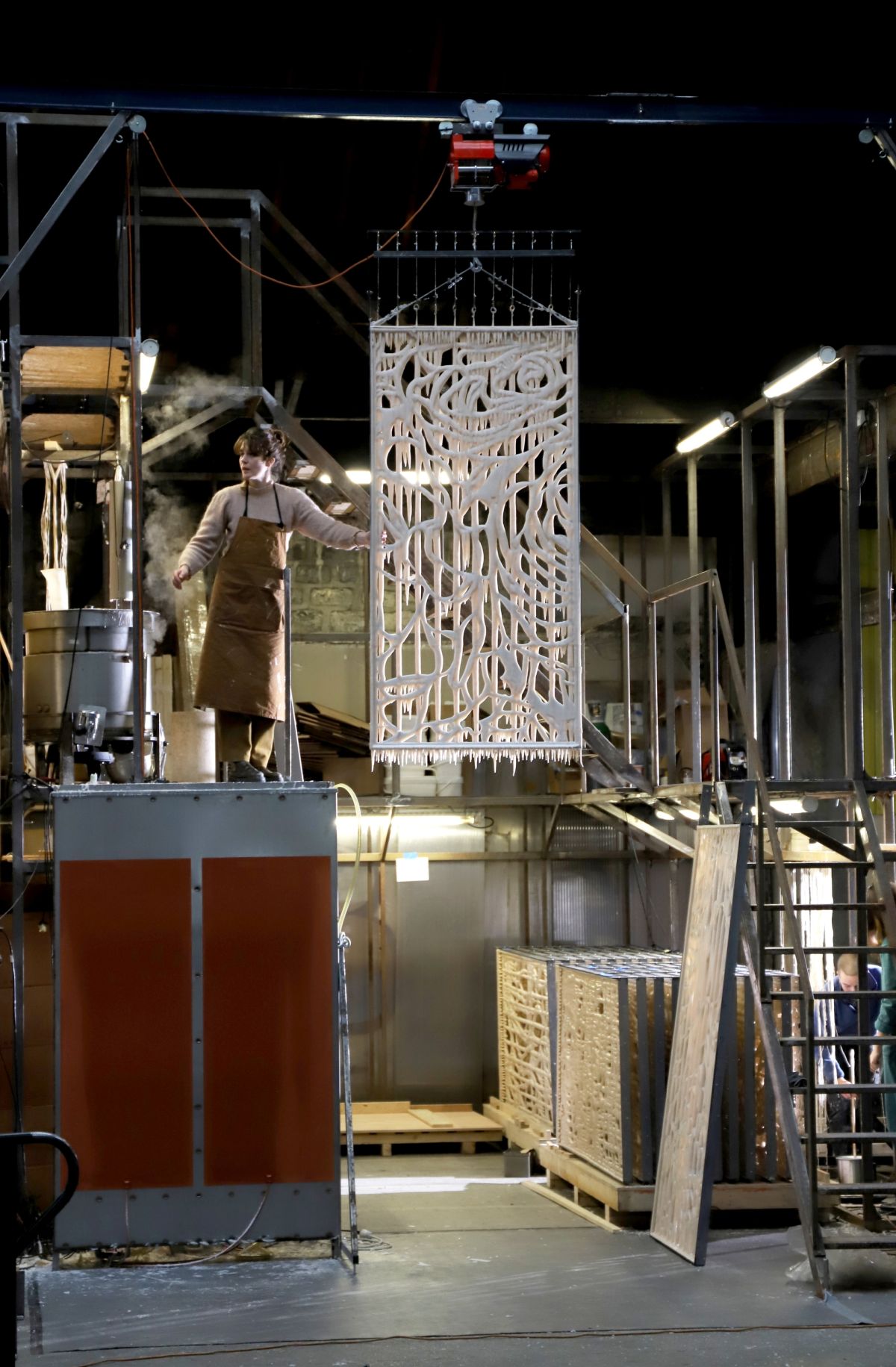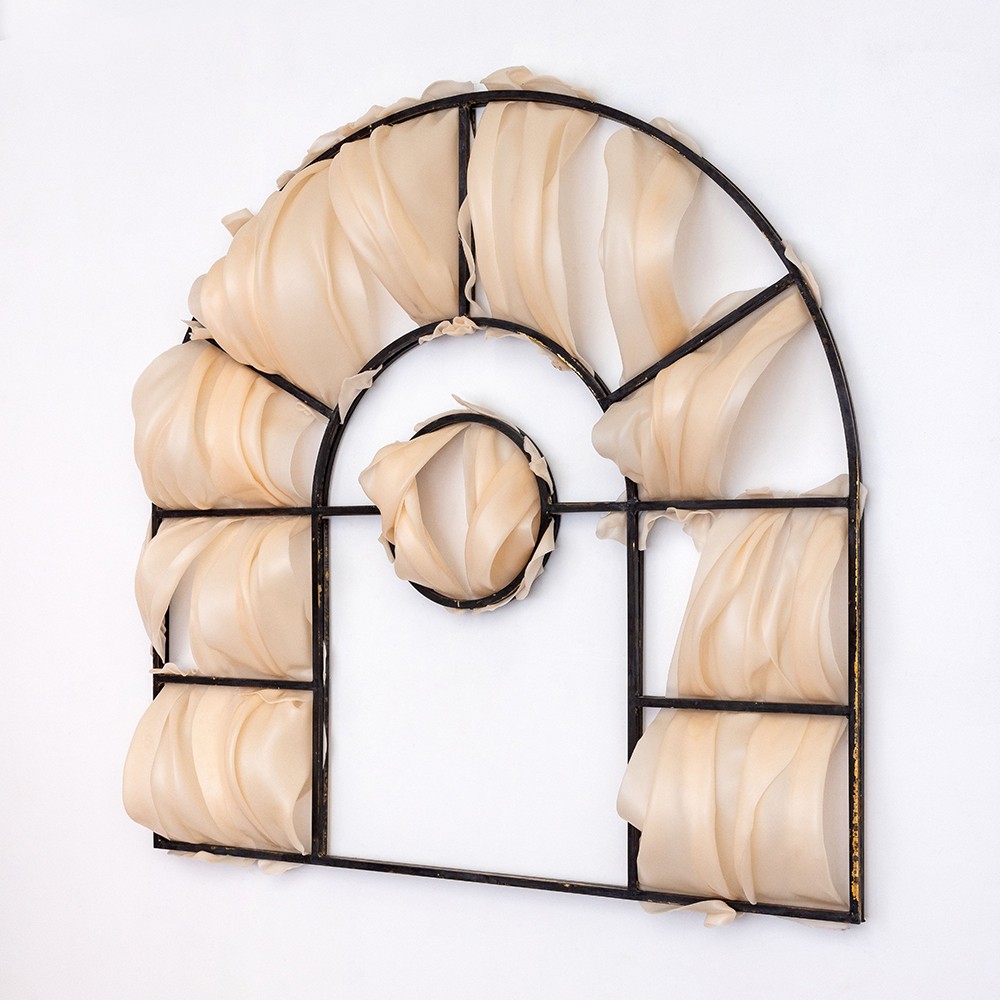Juliette Minchin | Passages

"A Skin that Divines: The Ever-Changing Work of Juliette Minchin"
By Lucette ter Borg
The holiest place of my childhood was not in the church we attended on Sundays, nor in the simple Mary chapel outside the village where I, just in case, crossed myself as I rode past on my bicycle. The holiest place, as a child, was by a forest stream, surrounded by century-old beech trees, far from the path where no walker ever ventured. To reach that spot, you had to weave through gigantic rhododendrons and climb over fallen trees.
At this place, the stream banks were covered with soft, springy moss. There, the water flowed clear, murmuring, always in motion, carrying twigs and fluffy animal hair. High in the treetops, I could hear birds echoing to each other. It was where I first experienced the sense of security that the forest could provide. As a child, I naturally found a word for it: magical.
The work of the French artist Juliette Minchin (1992) has the same effect on me. In the summer of 2021, I encountered Minchin's work for the first time at the Biennale of the Holy Triangle in Oosterhout. La Veillée au Candélou, created just a year after the artist graduated in 2018 from the École Nationale Supérieure des Beaux Arts in Paris, was a remarkable piece.
The square construction 'Wake by Candlelight' greeted me with a soft flickering light: alluring, inviting. The work smelled of candle wax, crumbling away. Pieces of warm wax fell to the floor with gentle thuds from the metal panels every morning during the exhibition. Lints in the wax were ignited every morning and extinguished every evening. The heat from the flames melted the wax, slow as a melting glacier, revealing geometrically worked panels arranged in a closed cubic form.
La Veillée au Candélou struck me as a hortus inclusus, a sealed spring that slowly revealed its mysteries. The work was about material, of course – natural materials, form, gravity, the interior of the cube. But more importantly, it conveyed a deep sense of mystery. In the Saint Paul Abbey in Oosterhout, I pondered on the unchanging change, vulnerability, the power of candle flames, and the destruction caused by those flames. And despite everything, I also thought about persistence and rebuilding. A small but significant detail: all the wax that melts from the metal structures in Minchin's work is reused in a subsequent piece.
Juliette Minchin writes to me in preparation for the exhibition she is installing at Roof-A in Rotterdam. She has been working with wax for five years, she says. In a video she sends me, I see her skillfully dipping intricately worked metal panels into wax in her studio. The metal is lowered and raised with a small crane into a bath of warm wax. The wax solidifies. The process is repeated until the structures in the panels become thick and luscious, resembling the color of custard. Wax, Minchin writes, has many wonderful qualities. It transforms and is pliable when warm. She folds the wax into drapes around geometric structures, carefully cutting off drips. The wax solidifies on the supports. And when wax solidifies – always with an element of surprise – it has the color of our skin: sensual and touchable. It is used to embalm the dead. The oldest portraits are covered with wax. Death masks are made of wax. The transparent swaddling cloth around the Omphalos, the sacred 'navel stone' in the Greek Delphi symbolizing the center of the earth, reminds Minchin of wax. Wax provides protection against the cold but also symbolic protection. Wax is part of a ritual: because you never just squeeze it out of a tube, but it takes time to mold it, let it solidify, and melt again.
The exhibition 'Passage' at Roof-A is described by Minchin as "an imaginary sanctuary." This sanctuary contains twenty-four sculptures partly covered in wax. Each sculpture has openings to allow the wind to pass through. One sculpture is a large panel of branches and leaves that Minchin displayed in 2023 in the twelfth-century, frequently looted Abbey of Beaulieu-en-Rouergue. This wax-covered panel will be lit and melted during the exhibition's opening.
In addition to the sculptures, she presents seven drawings, two of which are enormous, hanging from the ceiling on the gallery's first floor. These drawings are called Hydromancies. Hydromancy – I looked it up – is divination using water. Because water – it is believed – has a predictive power. The currents in a stream, a pendulum held above a water basin, a naturally formed hollow in rocks with water can reveal all sorts of things. Water also has an unpredictable quality, as it follows its own path – and Minchin uses this in her drawings. She writes that water and she "create" the work together.
First, she treats the paper with soot, burned Sicilian wood, charcoal, and Armenian pigments. Afterward, she sprays the paper with water, and finally, she dips the drawings in wax. The wax gives the drawings the appearance of sun-kissed skin. Under that skin, cloud-like patterns and irregular lines are visible, perhaps predicting my future like the lines in my hand. In some drawings, an eye is visible.
With the drawings, as Minchin writes to me, she wants to capture a piece of the cosmos. A flash of consciousness, meaning. The Hydromancies resemble prayer scrolls, old parchments, mandalas – but they are not. The drawings, as Minchin writes, invite embracing uncertainty in existence, cherishing uncertainty. Like her sculptures, the drawings are about transformation and a cyclical, rather than linear, time. The wax she uses and reuses, as Minchin writes, is "like a soul passing into another soul."
The place from my childhood, the stream with its mossy banks, still exists. Occasionally, I return to it, even though my parents have passed away, and all the friends from the old village have moved to the big city. It's a place where I hold my breath, where my footsteps are silent, and weight is of no importance. The magic still hangs almost tangibly between the trees and above the water. Unchanging, like newborn, and always in motion.
